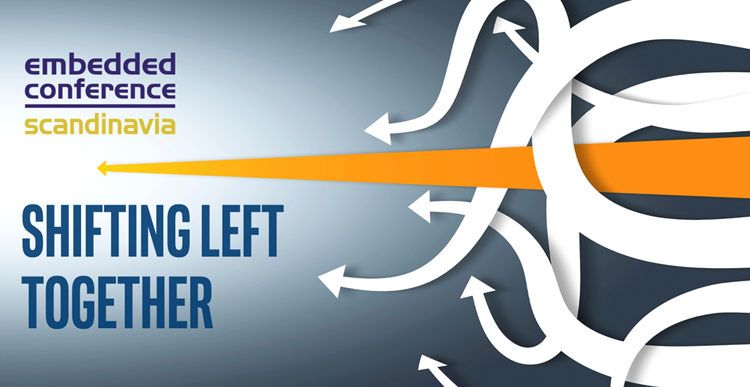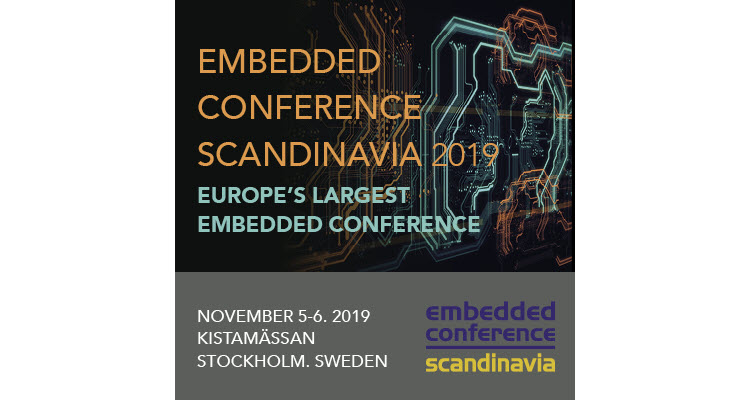
Shifting Left Together at the Embedded Conference Scandinavia
The Embedded Conference Scandinavia 2019 takes place on November 5 and 6, at Kistamässan in Kista, Sweden. I will be giving a talk on “Shifting-Left Together – Enabling the Ecosystem with Virtual Platforms” in the conference program. Talk is about how silicon vendors can (should) use virtual platforms to bring shift-left practices to their customers in addition to their own internal teams.
In my 30-minute talk on Tuesday November 5, I will share some of our lessons on how to use virtual platforms (and other simulators) to enable the hardware and software ecosystem outside of a silicon vendor before the hardware is available.
Shift left, the practice of using virtual platforms to develop, integrate, and validate software and systems before first silicon is the standard practice today, but it mostly stays internal to silicon companies. The internal benefits to a silicon vendor are huge: software support is in place when chips launch and ship to customers, bugs are found earlier in both software and hardware, the number of silicon re-spins is reduced, product quality improves, … etc, etc… I have written rather extensively about the benefits of virtual platforms and pre-silicon software and system development in the past (see links below).
However, there is no reason to stop there. Since the models exist already from internal usage, they can be provided to external customers too to accelerate their part of the silicon-to-market process. The progression looks something like this:

When virtual platforms are provided to OEMs (Original Equipment Manufacturers) ahead of hardware, the benefits of shift left get amplified. Now, the customer’s actual design featuring the silicon can be accelerated too and be ready when the silicon arrives. Typically, you would expect the power-on and bring-up process to run much smoother when the software has been developed and tested ahead of silicon availability.
Details
The talk is on Tuesday, November 5, at 15.50 in room M6. It is part of track 2, and the session is headlined “Embedded Software Development and Use”. Right after me, an old friend of mine, Bertil Spolander, will talk about recent developments in C++.
See you at the show!

Related posts:
- Shift left was part of the original value proposition for Simics from 1998
- “Shift Left – Building Systems and Software Before Hardware Lands”
- “Running Large Software on Simics – Then and Now”
- Simulation of terabytes of RAM before the hardware is present
Author
Dr. Jakob Engblom is a product management engineer for the Simics virtual platform tool, and an Intel® Software Evangelist. He got his first computer in 1983 and has been programming ever since. Professionally, his main focus has been simulation and programming tools for the past two decades. He looks at how simulation in all forms can be used to improve software and system development, from the smallest IoT nodes to the biggest servers, across the hardware-software stack from firmware up to application programs, and across the product life cycle from architecture and pre-silicon to the maintenance of shipping legacy systems. His professional interests include simulation technology, debugging, multicore and parallel systems, cybersecurity, domain-specific modeling, programming tools, computer architecture, and software testing. Jakob has more than 100 published articles and papers and is a regular speaker at industry and academic conferences. He holds a PhD in Computer Systems from Uppsala University, Sweden.